Summary
- EM wave description
- Energy & momentum of EM waves
- The electromagnetic spectrum
Chapter 34
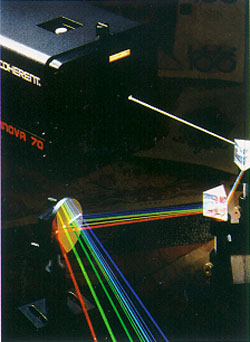
- The ray approximation
- Reflection
- Refraction



- Practice:
Try these additional examples
Example #5
Example #6
Example #7
- Prepare:
Read textbook section 33-6 before the next lecture
POP5 25.3a
The angle between two mirrors is 90° and a beam strikes one mirror at 40° and 1.25 m from the
second mirror (see fig. P35.14). How far does the beam travel before striking mirror 2?
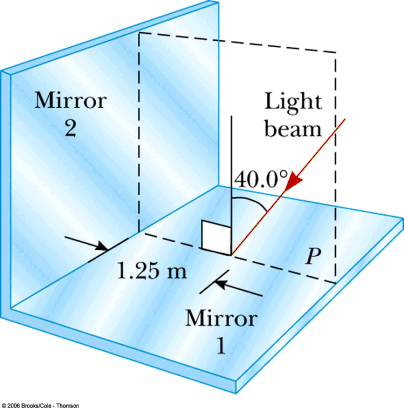 A. 1.25 m
A. 1.25 m
B. 1.63 m
C. 1.94 m
D. 0.803 m
Answer
POP5 25.3b
In what direction does the light beam travel after being reflected by mirror 2?
 A. 180° from the original beam
A. 180° from the original beam
B. 90° from the original beam
C. 40° from the original beam
D. 50° from the original beam
Answer
POP4 25.4a
A narrow beam of λvac = 589 nm light is incident from air
onto a smooth water surface at an angle of incidence of 35.0°.
What is the angle of refraction?
A. 49.7°
B. 35.0°
C. 28.2°
D. 25.5°
Answer
POP4 25.4b
A narrow beam of λvac = 589 nm light is incident from air
onto a smooth water surface at an angle of incidence of 35.0°.
What is the wavelength in the water?
A. 589 nm
B. 783 nm
C. 443 nm
D. 393 nm
Answer
Walker5e 26.EYU.1
A ray of light reflects from a horizontal flat mirror, as shown below. What is the angle of incidence for this ray of light?

A. 25°
B. 50°
C. 65°
D. 130°
Answer
klm
A light ray exits glass (n = 1.50) and enters water (n = 1.33). Which way does the ray go?
A. It bends toward the normal.
B. It bends away from the normal.
C. It does not bend.
D. It totally reflects off the interface.
Answer
gc6 23.29
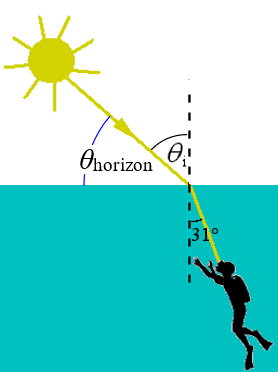 Rays of the Sun are seen to make a 31.0° angle to the vertical by an underwater observer.
At what angle above the horizon is the Sun?
Rays of the Sun are seen to make a 31.0° angle to the vertical by an underwater observer.
At what angle above the horizon is the Sun?
A. 31.0°
B. 59.0°
C. 43.2°
D. 46.8°
Answer
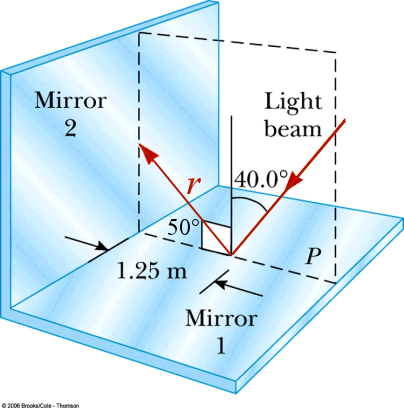
C. 1.94 m

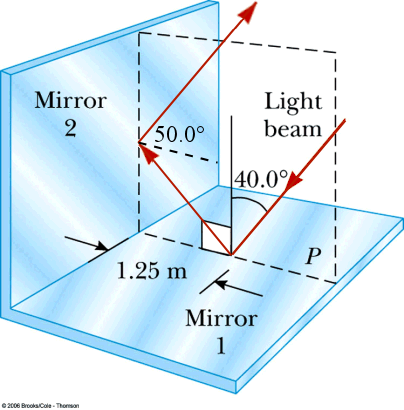
A. 180° from the original beam
A retroreflector, formed by mirrors that are fixed at right angles to
each other, always reflects a ray that is antiprallel to the incident ray.
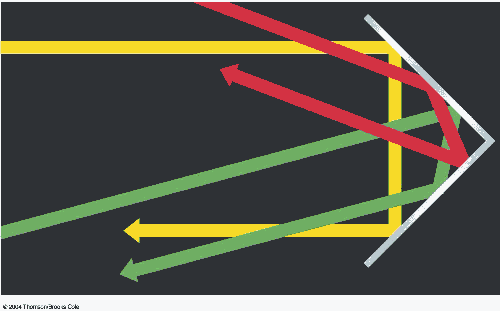
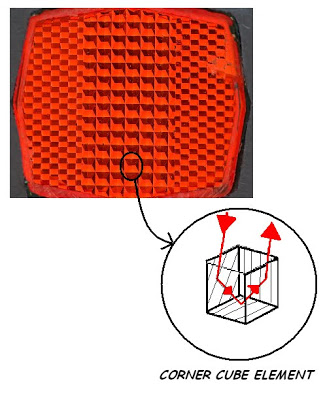

D. 25.5°

C. 443 nm


C. 65°
The angle of incidence is between the ray and the normal line, not between the ray and the surface. Hence the angle of incidence is 90° − 25° = 65°.
B. It bends away from the normal.
The wave must speed up as it enters a medium with a lower index of refraction.
It must therefore bend away from the normal.
D. 46.8°
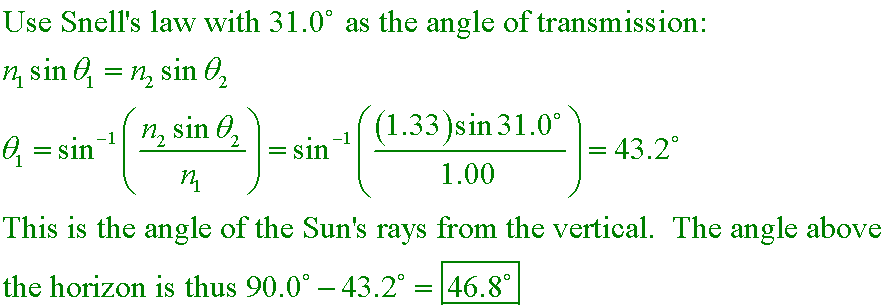




 A. 1.25 m
A. 1.25 m
 Rays of the Sun are seen to make a 31.0° angle to the vertical by an underwater observer.
At what angle above the horizon is the Sun?
Rays of the Sun are seen to make a 31.0° angle to the vertical by an underwater observer.
At what angle above the horizon is the Sun?








